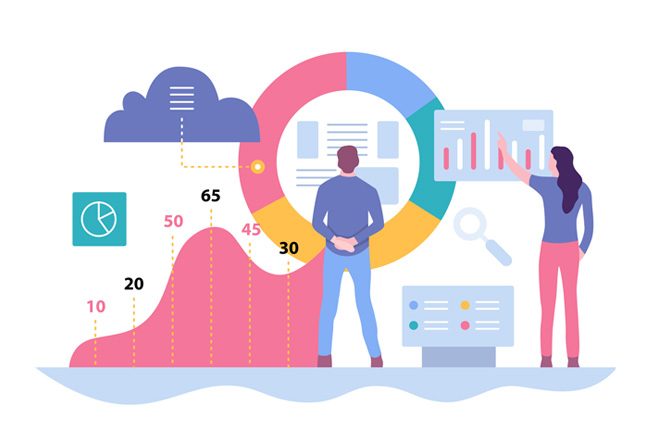The world’s most valuable resource is data. The five most valuable companies in the world, Google, Amazon, Apple, Facebook and Microsoft have become giants by leveraging the immense value of the data they hold. Yet the vast majority of organisations still woefully underutilise the enormous opportunity held within their own data to transform their operational and financial performance.
There are three key tenets to data, the first of which is data quality;
• Employees waste up to 50 percent of their time dealing with mundane data quality tasks
• Every year 25 percent of data becomes inaccurate
• 75 percent of companies believe their bottom line is affected by inaccurate data
• On average 12 percent of revenue is wasted because of poor data quality
• Companies that put a focus on implementing a high quality data initiative see a revenue increase of 15-20 percent
• Companies have seen as much as 40 percent of their initiatives fail to achieve targeted benefits due to poor data quality. This has a significant impact on operational efficiency
The cost of poor data quality can be summarised with the 1-10 Rule:
• On average it costs $1 to verify a record as entered (i.e. prevent a duplicate)
• $10 to scrub and cleanse it later
The importance of organisations having high quality data cannot be understated. Having consistent and accurate data at all levels enables informed decisions to be made, driving improved performance, increased efficiency and delivering improved outcomes at all levels. Organisations that do not adequately invest in their data quality will experience adverse impacts on operational and financial performance, and by the same token, the greater investment made by an organisation in driving up data quality the greater return on investment.
The importance of organisations having high quality data cannot be understated
There are many aspects that have an impact on data quality, these include:
• Completeness and coverage (all relevant items captured)
• Accuracy (correct information in the appropriate form with valid values)
• Relevance (relevant to purpose being used)
• Reliability (consistent collection processes and associated practices)
• Timeliness (recorded and available as quickly as possible – ideally ‘real time’)
• Recording (in the appropriate place whether in paper or electronic form)
• Storage (in the correct place, avoiding duplication)
• Accessibility (available to the ‘right’ people subject to role based and IG policies)
• Reporting (correct data, complete and accurate)
• Validation (checks and balances applied to ensure data is accurate and remedial action taken where areas for improvement identified)
There are opportunities to improve data quality on both a continuous basis (via user data entry and data exchange between connected systems) and at the point that data is being migrated on bulk from legacy to new systems. However, it is also worth noting that the top three data projects – migration, integration and analytics are all examples of where poor data quality can significantly impact successful outcomes. Any organisation going through the process of implementing a new ERP solution will appreciate what a major investment that is, and that investment will be severely undermined if appropriate consideration is not given to the scope and quality of the data which underpins it. With any migration, integration or analytics project it is critical to ensure the data migrated will support business needs, be high quality, have a well understood common definition and be used appropriately across applications and business processes.
This leads us to the second tenet; data management. Typically, the challenges facing organisations in effectively managing their data begin with overall responsibility and accountability. Too often the ownership of data is presumed to sit with divisional or system heads, without specific processes or formal allocation. As a result service areas are often unclear or uncertain in investigating possible errors if they haven’t got access, knowledge or control to assess and change within the system. Other key challenges include unsuitable data management tools, resource constraints restricting the ability to invoke and enforce information governance policies or procedures, poor data analysis and reporting tools, limited automation, and the absence of a co-ordinated approach.
Put simply, without a systematic way to keep data clean, bad data will happen. Whereas, organisations which have implemented a comprehensive and sustained data management initiative have often reported cost reductions of as much as 10-20 percent of corporate budgets, 40-50 percent of IT budget and 40 percent of operating costs.
Data governance is our third tenet. A system of decision rights and accountabilities for information related processes, executed according to agreed-upon models which describe who can take what actions with what information, and when, under what circumstances, using what methods. Organisations do not always find it easy to identify (much less meet) all data stakeholders’ information needs. Some of those stakeholders are concerned with operational systems and data. Some are concerned about analysis, reporting, and decision-making. Some care primarily about data quality, while others might find that system inadequacies keep users from linking, sorting, or filtering information. Some data stakeholders focus on controlling access to information; others want to increase abilities to acquire and share data, content, documents, records, and reports. And still others focus on compliance, risk management, security, and legal issues. Each of these data stakeholder groups may have a different vocabulary to describe their needs, their drivers, and their constraints. Typically, they have trouble communicating with each other. Indeed, they may not even have the same set of requirements in mind when they call for better governance of data. Governance frameworks help organise how the organisation approaches data management and communicate about complicated or ambiguous concepts.
Below is an overview of some of the things an organisation can do to get their data under control, and begin to leverage maximum benefit, whether in preparation for a sale, in advance of a major system project or to empower the organisation’s strategic decision making on a daily basis.
Data quality
• Devise a plan of action on data cleansing and remediation programme
• Maintain quality of the data using feedback, concerns, questions; internally reporting metrics; evaluating and identifying issues; and co-ordinating and implementing corrections regularly
• Remove duplications in data
• Ensure compliance and security of the data
Data management
• Monitor data usage to assist teams, share best practice trends in data use, and provide insight into how and where teams can use data to help in day-to-day decision-making
• Identify the degree of conformance of data to internally defined business rules
• Define a roadmap for ongoing data health assessment based on the company’s strategic objective, data governance charters and desired future state
• Implement continuous improvement data quality lifecycle i.e discover – define – assess – analyse – improve – monitor – discover, and so on
Data governance
• Deploy an actionable framework that will help a variety of data stakeholders from across the organisation to come to a consensus, establish accountabilities and define measurable successes
• Create processes and procedures along with access controls to monitor adherence. This includes establishing internal policies and standards—and enforcing those policies
• Optimise workflows and communications
Review the likely impact of data quality issues on business process and system interfaces
• Enhance search ability and alignment
Tooling tips and definitions
• Data profiling and data quality monitoring tools are used to gain insight, assess data, and provide dashboards for monitoring data quality over time
• Metadata analysis capabilities integrate and relate metadata from multiple systems in the company and allows transparency of the existing assets in the company and how they are related to each other
• Cleansing rules enable the creation of specific rules for cleansing data according to company policies, industry standards, and so on
• A business term glossary provides a central glossary for organisations to store business terms or definitions that have been approved by the responsible business experts.




